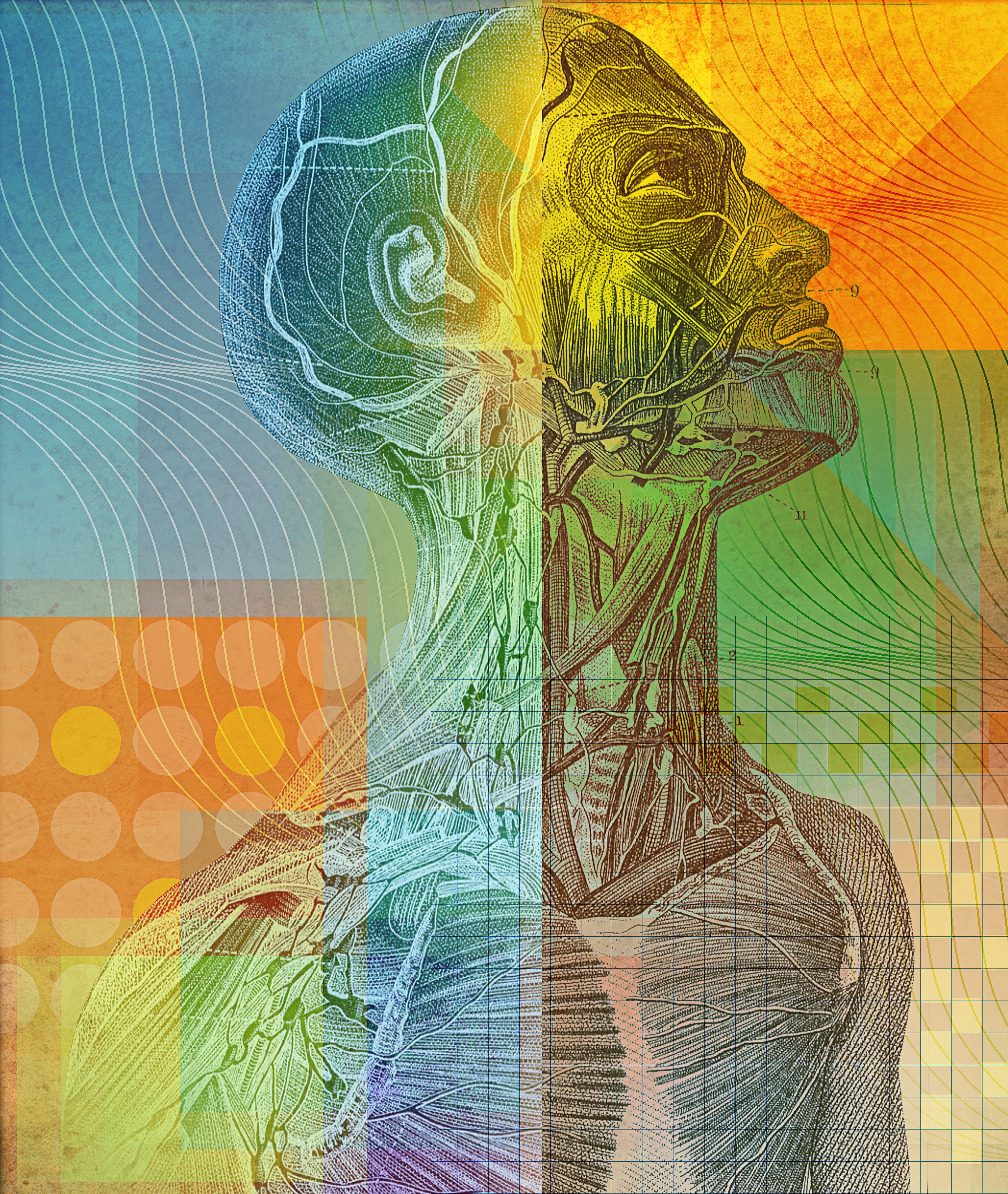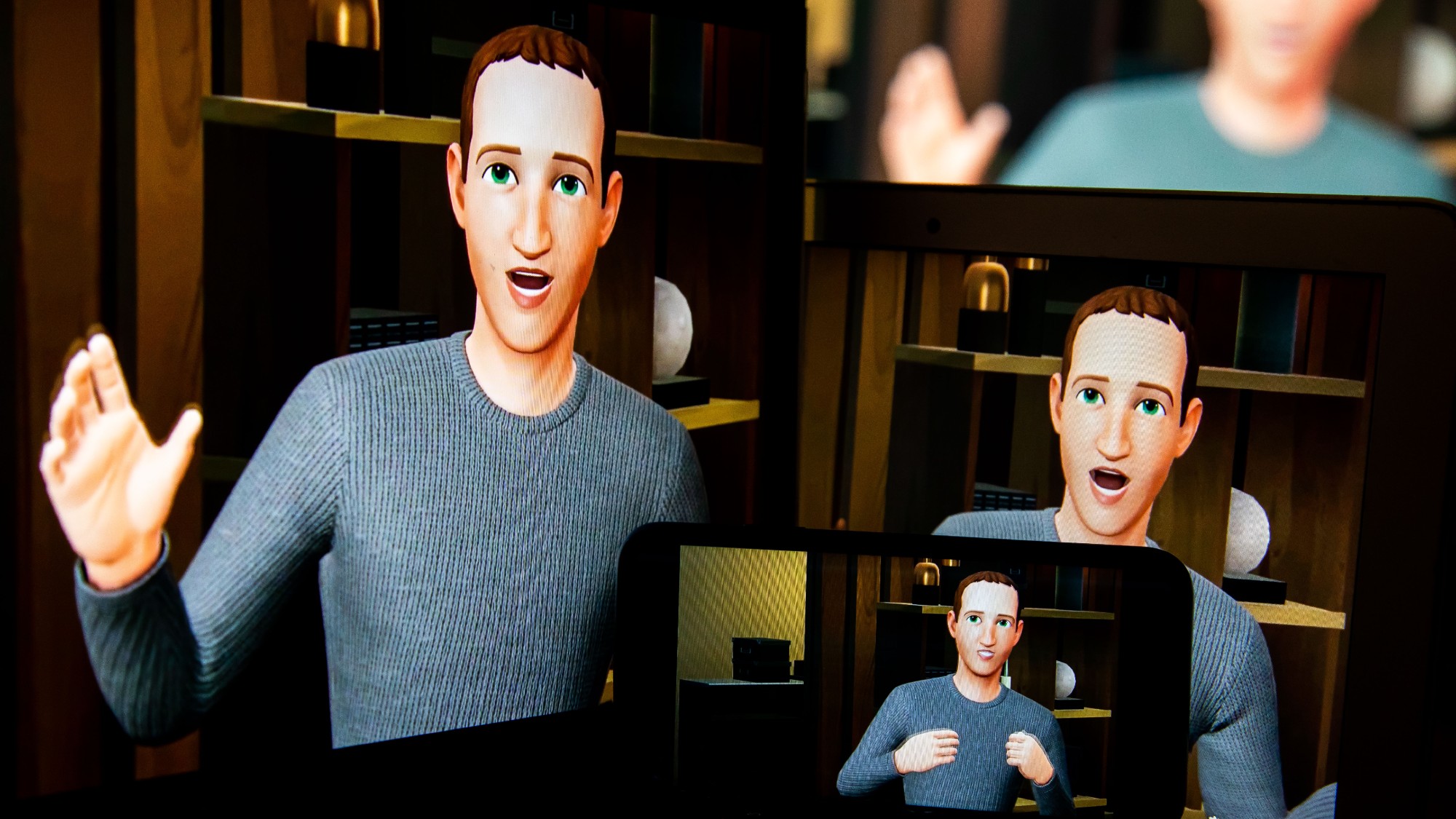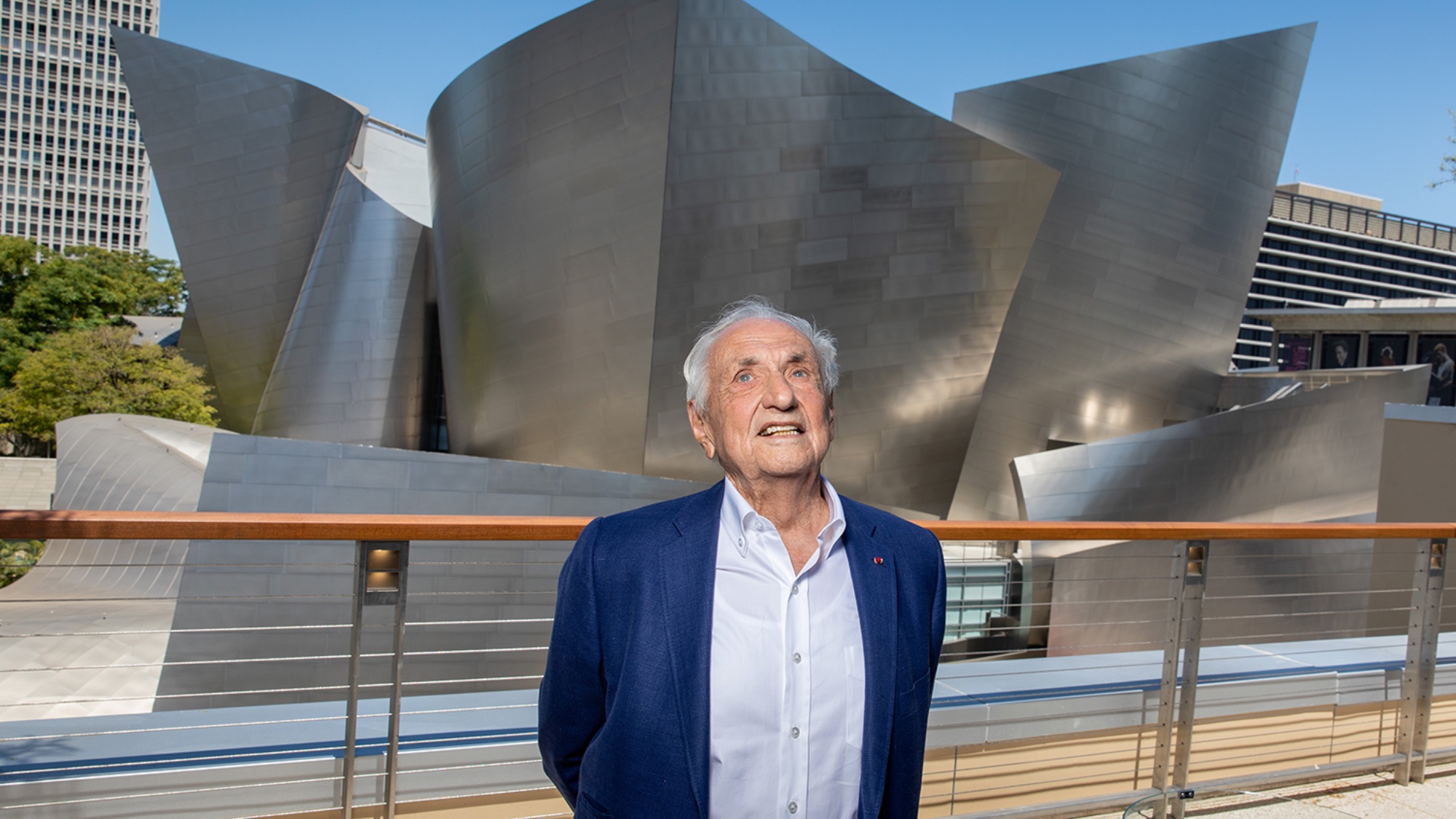How to transplant a head
An Italian surgeon hopes to perform the first-ever head transplant. Is he a genius or a crank?

Outside a large concrete hospital in Turin, Sergio Canavero is trying to persuade a pair of security guards to let us use the staff car park. "Allora," he begins, explaining to the guards that he used to be employed at the hospital, as a surgeon in the neurology department, and is back for a visit. At the end of his speech, he moves a stiff hand across his neck, a cut-throat gesture that would represent a threat if made by almost anyone else. The guards grin in recognition and wave us through. "I told them I'm the guy who's going to do the first human head transplant," Canavero tells me. "Italians are suckers for a celeb."
Earlier this year, Canavero became famous around the world when he enlarged on plans, long cherished, to remove the heads of two people. One would be alive, with an ailing body (a paraplegic, say), the other newly dead or doomed (perhaps the brain-dead victim of an accident). As Canavero explained in academic papers and speeches, he planned to surgically attach the first head to the second body, fusing the spinal cords so that the owner of the first head might enjoy the functional use of the second body. It might be best understood as a "body transplant," but the wider world has tended to settle on the more sensational phrase.
"Head transplantation, body transplantation, whatever," Canavero says as we walk around the busy hospital. "Technicality!"
The Week
Escape your echo chamber. Get the facts behind the news, plus analysis from multiple perspectives.

Sign up for The Week's Free Newsletters
From our morning news briefing to a weekly Good News Newsletter, get the best of The Week delivered directly to your inbox.
From our morning news briefing to a weekly Good News Newsletter, get the best of The Week delivered directly to your inbox.
He once thought the first head transplant would be performed at the hospital in Turin. Canavero came here as a medical student in the 1980s, and was employed on the wards for much of his professional life. Then he went and caused "the brouhaha," as he now calls it — publishing papers on head transplants in the medical journal Surgical Neurology International, giving TED talks in Limassol and Verona, making headlines, becoming that "celeb." Canavero says the Italian medical establishment turned against him.
Last February, he and the hospital that had employed him for so long agreed to rescind his contract. "I've become a pariah," he says, making sure I notice the frosty reception he receives from some of his former colleagues in the neurology department. "You see? No hugs."
So he has had to look abroad for somewhere to stage his surgery. He tells me that, after lengthy negotiation, it will take place in China, in the northern city of Harbin. The Harbin Institute of Technology will provide assistance, as will Harbin Medical University, which has made him an honorary professor in anticipation. With the Chinese "providing the hospital and personnel," his operation will be ready to go sooner than anybody might have expected — as early as Christmas 2017, he thinks.
Canavero has a very clear picture of this surgery in action, having outlined it in two TED talks, in a keynote address last summer at an American conference of neurosurgeons, and in a new book, Il Cervello Immortale ("The Immortal Brain"). He describes it to me in detail: the operating theater of the near future, where two bodies will be clamped tight in special frames. One will be the anesthetized patient; the other, a brain-dead donor. Using either "a specially fashioned diamond microtomic snare-blade" or "a nanoknife made of a thin layer of silicon nitride" (he isn't sure yet), the bodies will be severed at the neck between the C5 and C6 vertebrae. Then the frames that are clamping the two bodies will begin to separate, their upper parts rotating and taking the two heads with them. The patient's head will be deposited atop the donor's body.
A free daily email with the biggest news stories of the day – and the best features from TheWeek.com
Next, a marathon of surgery, somewhere between 36 and 72 hours long and requiring a crew of 150 medics. About 80 of them, Canavero thinks, will need to be surgeons. "At first, it will be expensive" — around $17 million, he guesses, admitting that private sponsors are still needed. "Later, as the technique gets perfected, the costs will be slashed." In the operating room, those 80 surgeons will relay in and out as expertise dictates. The head-body arteries will be joined first, so that blood recirculates around the brain. As for the other connections required (windpipe, gullet, spine, everything that links a human's head to the rest), Canavero says he will stand aside until it comes to the spinal cord. Functional neurosurgery, or that relating to movement, is his field.
If his patient is to regain movement after the operation, some of the millions of nerves that exist inside the two spinal cords will need to connect. Canavero has novel ideas about ways to "sprout" such connections during the surgery, including delivering small electric shocks to the spinal cord at the point of fusion, and by flushing in a substance called polyethylene glycol, or PEG, something he believes will supercharge the process. Not all the nerves in the spine will need to regrow and join, Canavero thinks, for the patient to regain some movement — just, say, 10 to 20 percent of them.
After the operation, the patient will be kept in a coma for about three weeks, in part to inhibit movement. Then rehab, months of it. Canavero expects this will involve some kind of virtual-reality simulator, to help the patient acclimatize to the unfamiliar body. There might be hypnosis. Afterward, he anticipates recovery, a press conference, and ("Why not?") a Nobel prize. "It will be much more than landing on the moon, I'm pretty sure about that.... This will be the greatest revolution in human history. If it pans out as I expect it to."
One very tangible piece of the plan is in place. At the meeting of American surgeons last summer, Canavero introduced a man named Valery Spiridonov. A 31-year-old graphic artist from Russia, Spiridonov has severe muscular atrophy and has been a wheelchair user all his life. Spiridonov has volunteered, whenever Canavero is ready, to be a test patient: the first guy to go under the microtomic knife. "I call him Gagarin," Canavero says.
Head transplants have been attempted before — on Russian puppies in the 1950s, on an American monkey in the 1970s, on hundreds of Chinese mice between 2013 and 2014. The puppies lived less than a week, the monkey just over that. The mice tended to linger about a day. But in all of those cases, proof of concept was the aim, less so patient survival. It is a regrettable truth that very little innovation takes place at the sharp, scalpel end of medicine without a lot of animals getting killed first.
"Heart transplants, kidney transplants: all were based on years and years of animal work," says the eminent British neurosurgeon Henry Marsh. Many of those who are skeptical about Canavero's scheme, Marsh among them, have wondered: Where are his carcasses?
Canavero tells me he is morally opposed to experiments on animals. "I don't want to kill any more animals. We've killed enough. We don't need more animal data." He believes the necessary research for his surgery has already been done — in disparate studies over a century, he says, not just those experiments on puppies, monkeys, mice. Canavero has dug up papers relating to an American woman who in 1902 had her spinal cord severed by a gunshot; also a skier, similarly injured in an accident on the slopes in 2005. In both cases, the patients' spines were successfully refused by surgeons, with recovery of limited movement.
Canavero remembers reading in a newspaper about the head transplant attempted on a monkey, and immediately thinking about being the first to perform such surgery on a human. He was poor at the time, his upbringing "rough." "It steeled me," he says. "My father told me, 'Either your grades are good or you go to work.' I was best in class at the end of elementary school. At the end of junior high, eccellente."
He enrolled in medical school, and within a couple of years was submitting papers to academic journals. In the mid-1980s, he moved to the hospital in Turin and began to train as a functional neurosurgeon. What did his peers make of him back then? "I've always been a loner," he says. But he had friends? "Of course, from time to time you interacted. I would stick to that word. I interact when I have to learn, then I go my way. You can only go alone on such a path."
Canavero is aware of his idiosyncrasies. "I'm not normal," he says. "I have no problem admitting that. Even if I didn't, you would probably notice, right? You'd sense something?" Perhaps. At one point he seizes me by the neck to demonstrate a jiujitsu chokehold. Later, he cheerfully describes winning his wife away from another man, who was taller. As well as several influential medical papers, he once published a book, Donne Scoperte ("Women Uncovered"), that outlined his tried-and-tested seduction techniques. "I'm not really a feminist, so, sorry to the girls."
Canavero likes to talk about medical pioneers who were outcasts and fringe-dwellers in their day. Louis Pasteur, he says, was called crazy for suggesting illnesses could be caused by microbes. "The history of mankind is trial and error. But we have to be dreamers. If you don't dream, you're not going anywhere." Society's challenge, Canavero thinks, is "to tease apart the kooks from the superkooks. And maybe you can only know that after the caper." It is a theory echoed by Spiridonov, the man who's offered to risk his life to be Canavero's first patient. "Some people are geniuses and some people are cranks," he says. "And you might never know before the project is finished."
I ask about China's involvement in all this. Canavero has said that he's committed to the procedure being open to public view at all stages — scrutinized. I point out that China isn't famous for that. "China's China. The media's state-controlled. But China will want you to know about this, just to spite the West." He admits, suddenly, that in all likelihood Spiridonov won't be the first patient to undergo the procedure. "Actually, he will not be the absolute number one. Probably the Chinese will want to do that on a Chinese patient." Canavero expects it will be somebody with terminal cancer. "Someone with minimal life expectancy, in order to test it, like Apollo 10. Valery will be Apollo 11."
If Spiridonov recovers, gets used to his new body, and goes on to have children, whose children will they be? "Not his," Canavero says. "That's the only ethical question you might ask. But imagine: You have a child, and this child one day is involved in a car crash, brought to the hospital, declared brain-dead. There's nothing that can be done. But now imagine this: I'm the doctor on call. I come down and tell you, ‘For the brain of your child I have no solutions. But if you grant me his or her body, one day that body, with a new head, will reproduce. And those children will be your grandchildren. Life will not end!'"
When it comes to the implications of all this, Canavero doesn't really consider them to be his problem. Scientifically, "what can be done, will be done." All he feels obliged to do is encourage other people to ponder the implications. If we are to live longer, for instance, what about overpopulation? He guesses we'll have to think about conquering other planets. When I ask how there will be enough bodies to support all the transplants, he says, "Cloning will come into play." I must show my exasperation, because he looks at me with concern. "I know it's hard," he says. "It's hard to swallow, I understand that, it's crazy. Sometimes, when I look at it, I say, ‘Will mankind be able to handle this?' I don't know! But society must prepare itself for a major tectonic shift."
Excerpted from an article that originally appeared in The Guardian. Reprinted with permission.
-
 Metaverse: Zuckerberg quits his virtual obsession
Metaverse: Zuckerberg quits his virtual obsessionFeature The tech mogul’s vision for virtual worlds inhabited by millions of users was clearly a flop
-
 Frank Gehry: the architect who made buildings flow like water
Frank Gehry: the architect who made buildings flow like waterFeature The revered building master died at the age of 96
-
 Is MAGA melting down?
Is MAGA melting down?Today's Big Question Candace Owens, Tucker Carlson, Laura Loomer and more are feuding